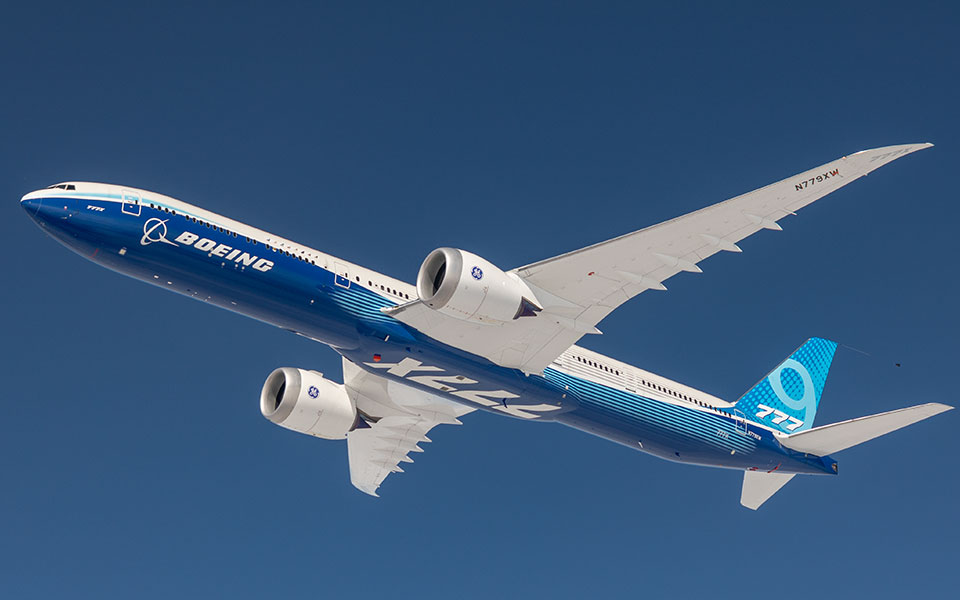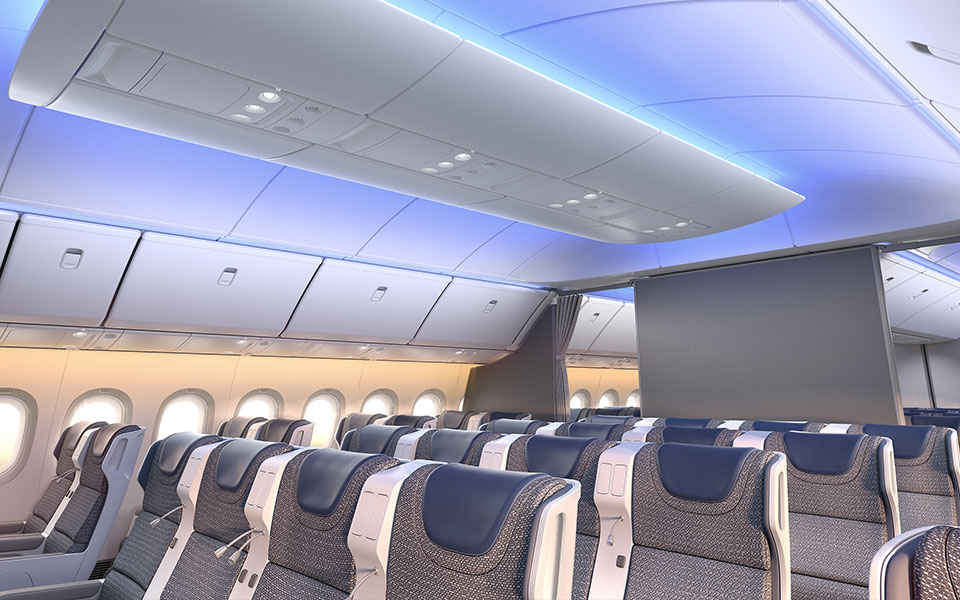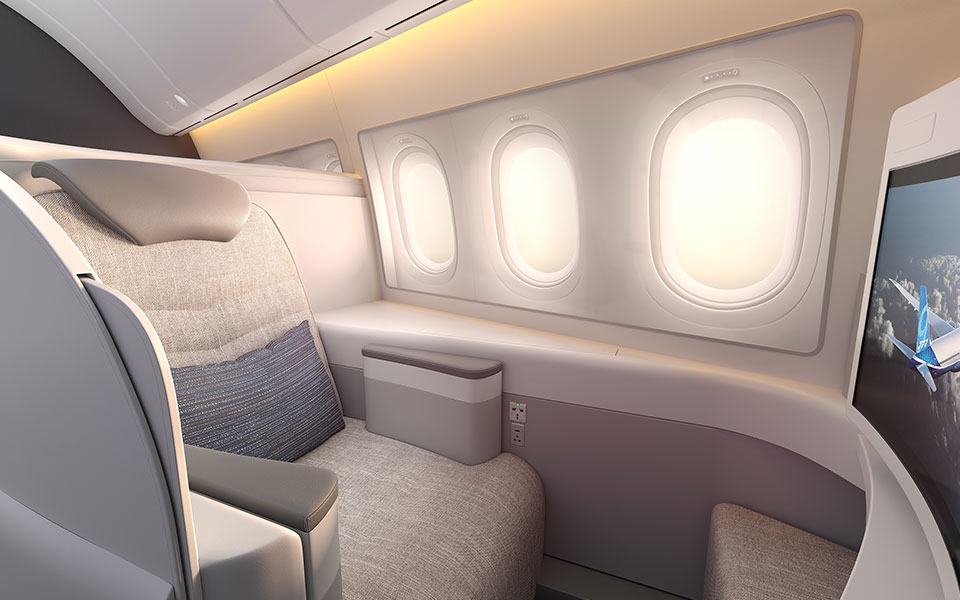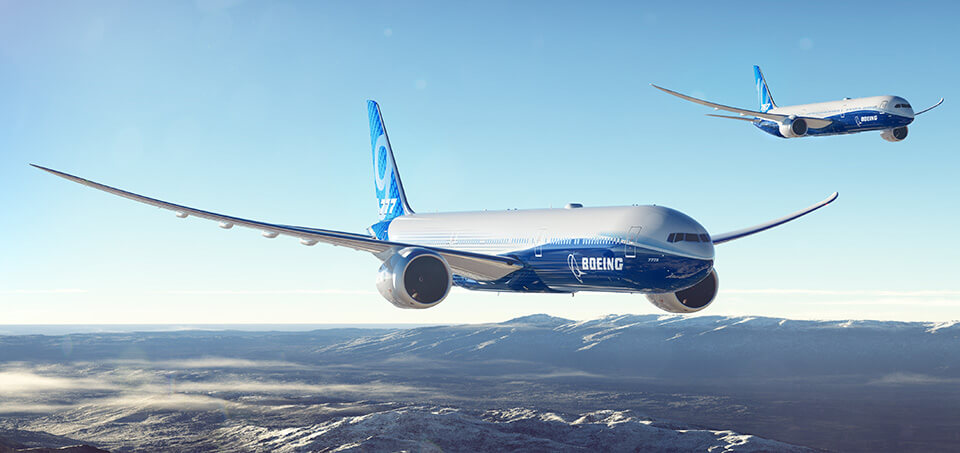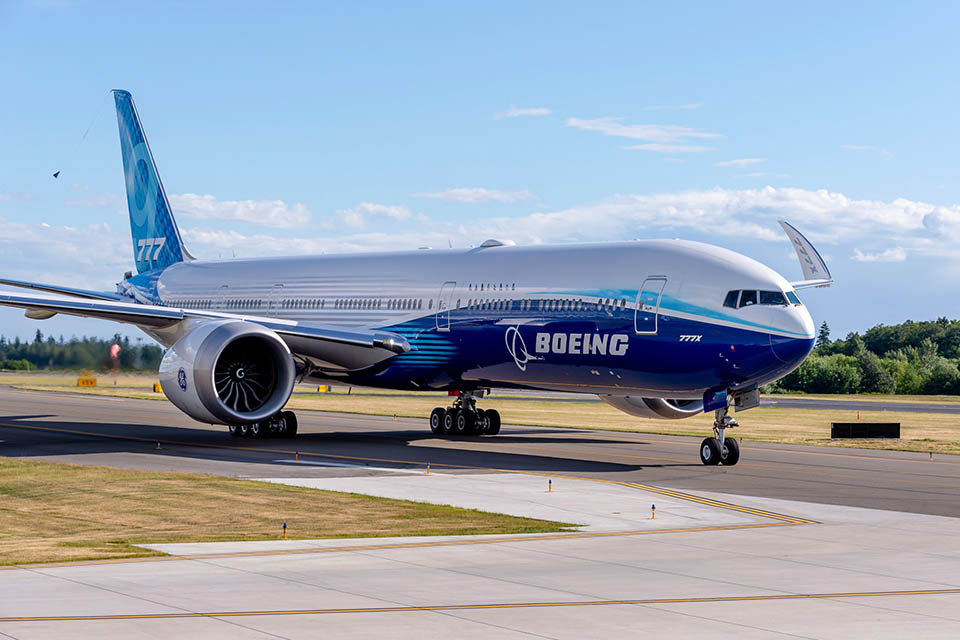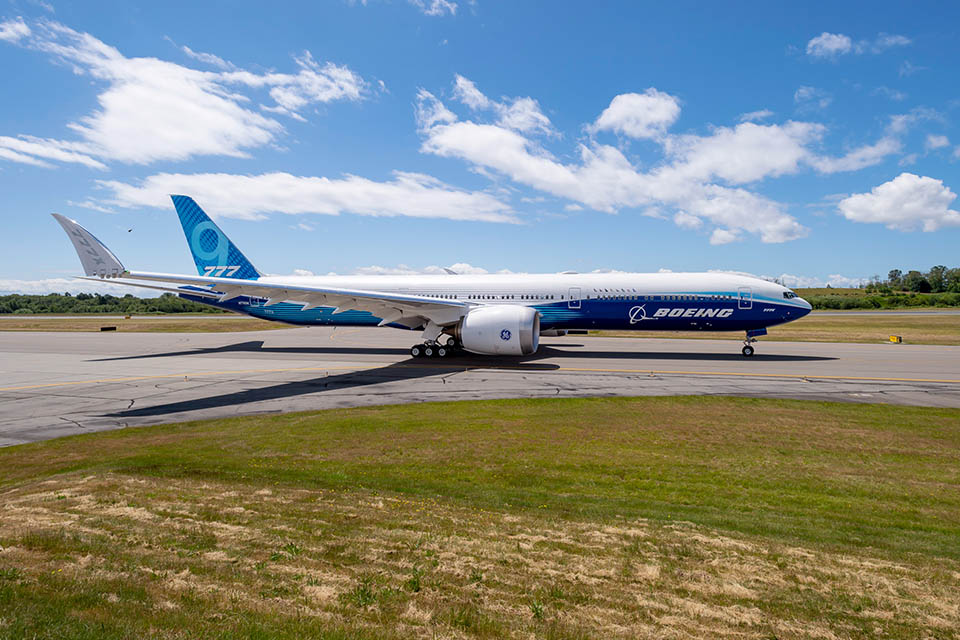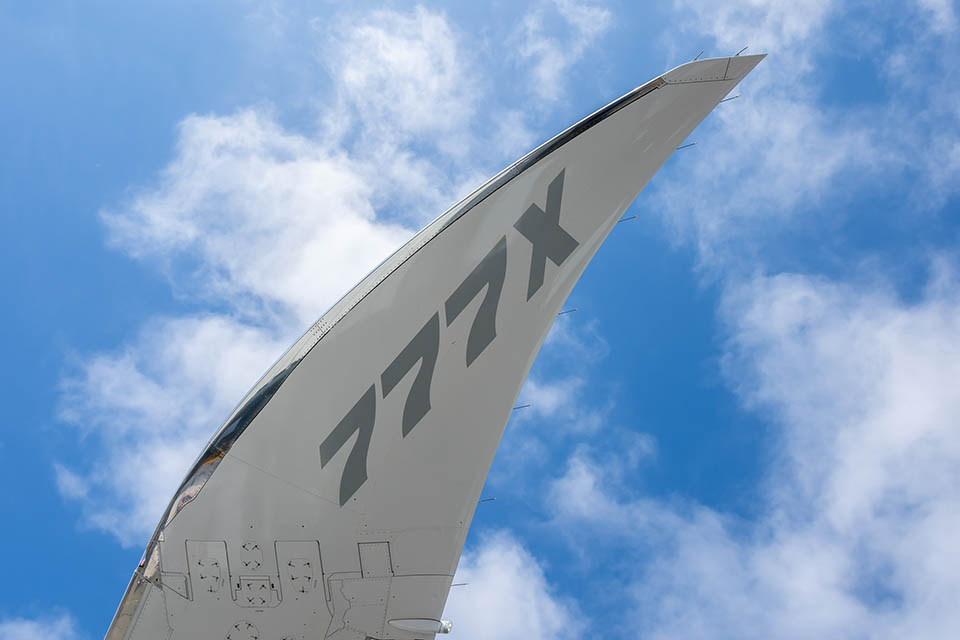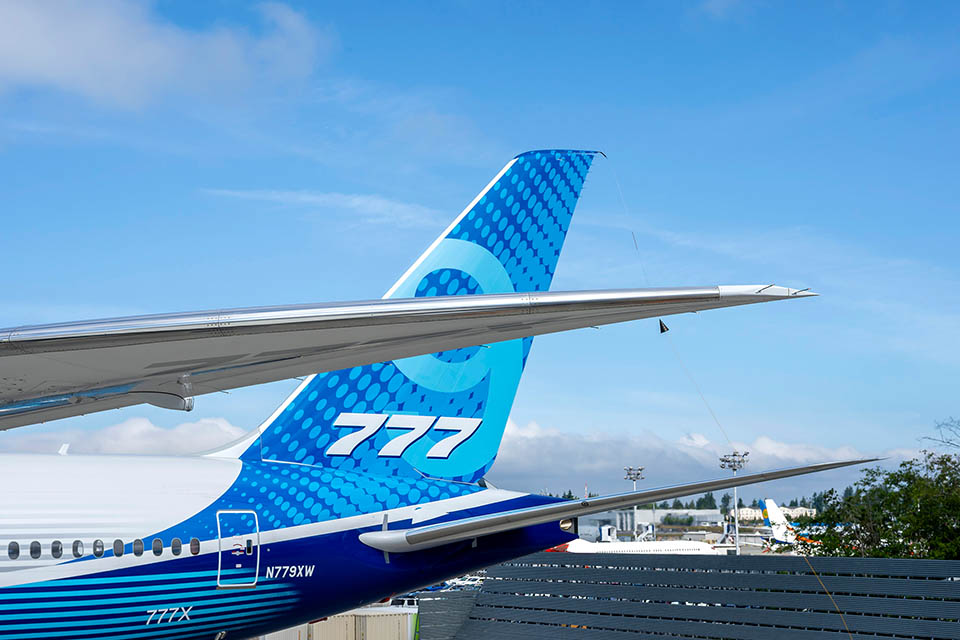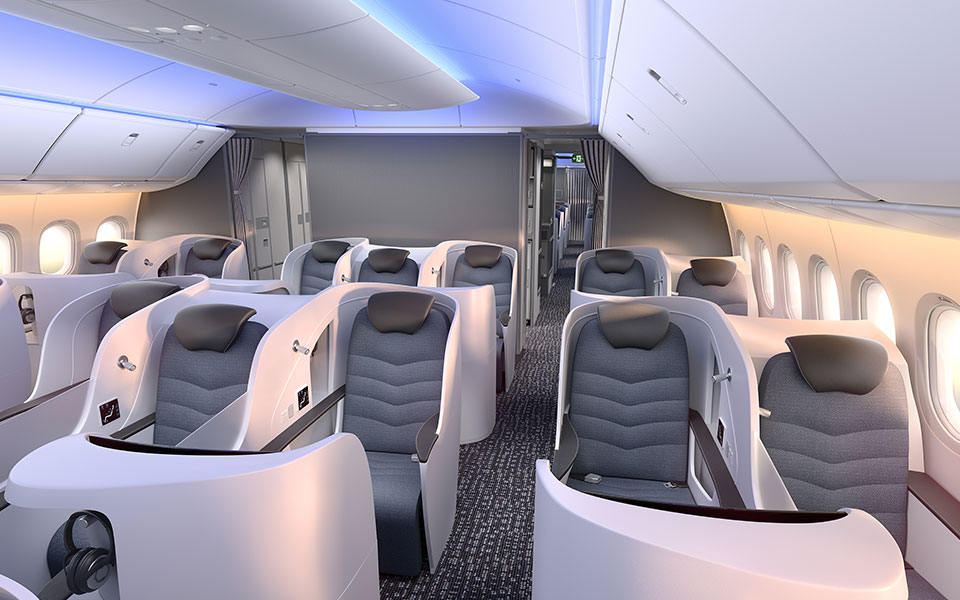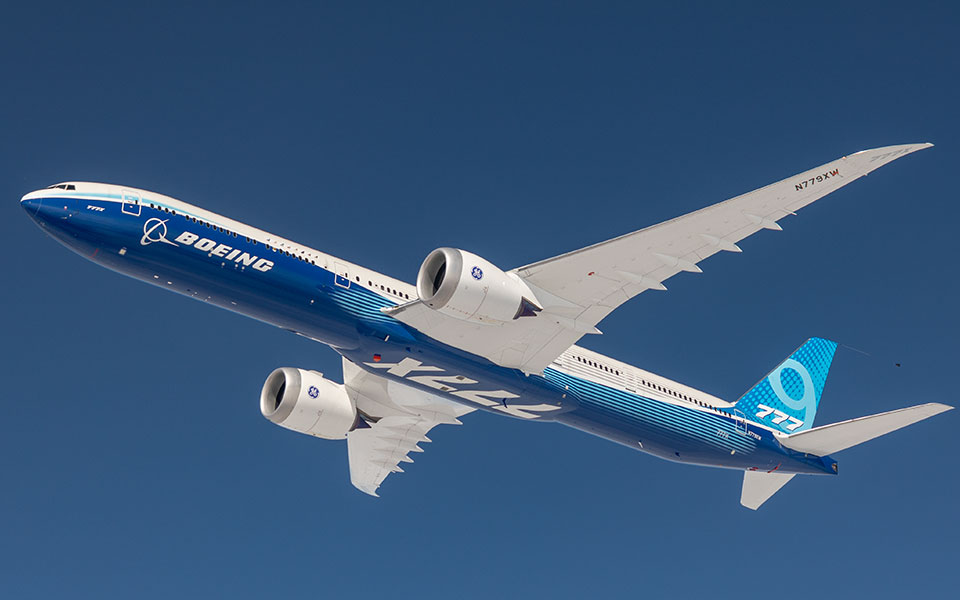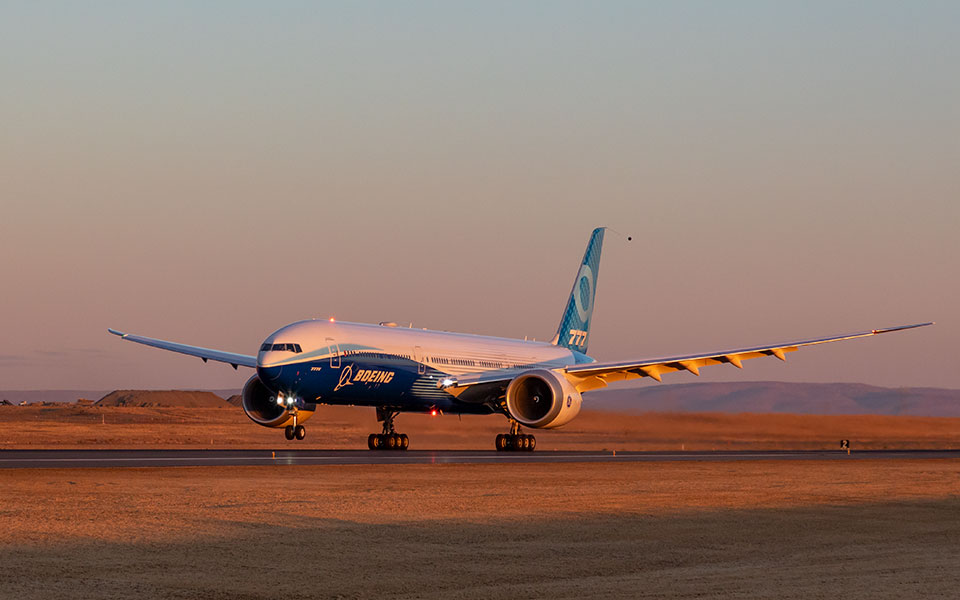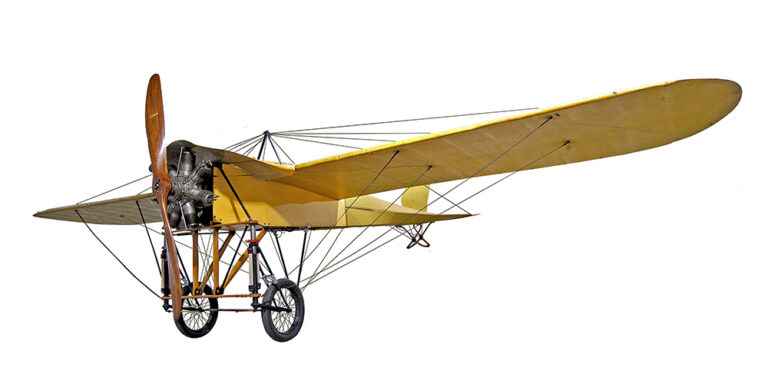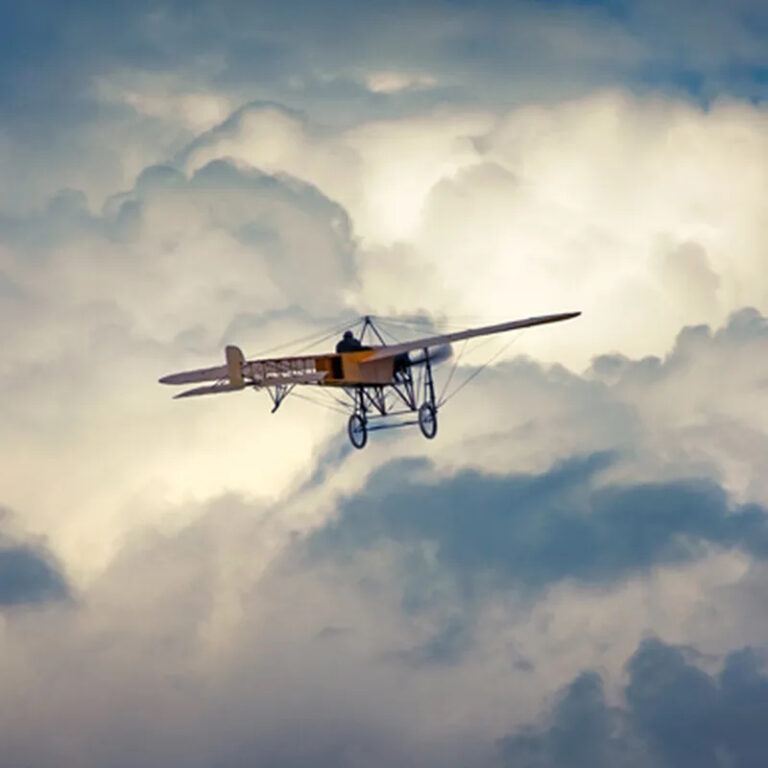Views: 4
Information
The Boeing 777X is the latest series of the long-range, wide-body, twin-engine jetliners in the Boeing 777 family from Boeing Commercial Airplanes. The 777X features new GE9X engines, new composite wings with folding wingtips, greater cabin width and seating capacity, and technologies from the Boeing 787. The 777X was launched in November 2013 with two variants: the 777-8 and the 777-9. The 777-8 provides seating for 384 passengers and has a range of 8,745 nautical miles [nmi] (16,196 km; 10,064 mi) while the 777-9 has seating for 426 passengers and a range of over 7,285 nmi (13,492 km; 8,383 mi).
The 777X program was proposed in the early 2010s with assembly at the Boeing Everett Factory and the wings built at a new building adjacent to the Everett factory. As of February 2023, there are 363 total orders for the 777X passenger and freighter versions from ten identified customers and other buyers. The 777-9 first flew on January 25, 2020, with deliveries delayed multiple times and expected to begin in 2025.
Development
Initial design
In 2011, Boeing refined its response to the revamped Airbus A350 XWB with three 777X models, targeting a firm configuration in 2015, flying in late 2017 or 2018, and entering service by 2019. The 407–passenger 777-9X should stretch the 777-300ER by four frames to 250 ft 11 in (76.48 m) in length, for a 759,000 lb (344 t) maximum take-off weight (MTOW) and powered by 99,500 lbf (443 kN) engines, targeting per-seat 21% better fuel burn and 16% better operating cost. The smaller 353-seat 777-8X was to stretch the 777-200ER by ten frames to 228 ft 2 in (69.55 m), with a 694,000 lb (315 t) MTOW and 88,000 lbf (390 kN) turbofans to compete with the A350-900 with improvements over the -200ER like the 777-9X over the 777-300ER. A 8LX with the 9X MTOW would have a 9,480 nmi (17,560 km; 10,910 mi) range. The current 777-200LR/300ER have a 775,000 lb (352 t) MTOW.
A new carbon-fiber-reinforced polymer (CFRP) wing with a wingspan of 213 or 225 ft; 2,560 or 2,700 in (65 or 68.6 m) with blended winglets, or up to 233 ft 5 in (71.1 m) with raked wingtip provide for a 10% larger wing area. It would fall into ICAO aerodrome code F like the 747-8 and A380 but with 22 ft 6 in (6.9 m) folding wingtips it would stay within the 213 ft 4 in (65.02 m) code E like current 777s. Horizontal stabilizers would be extended.
Engine selection
The General Electric GE90-115B of the earlier 777-200LR and -300ER variants has a 42:1 overall pressure ratio and 23:1 HP compressor ratio. Rolls-Royce Plc proposed its RB3025 concept with a 132 in (335 cm) fan diameter, a 12:1 bypass ratio, and a 62:1 overall pressure ratio, targeting a fuel burn of more than 10% lower than the GE90-115B and 15% lower than its Trent 800 powering the 777; the RB3025 concept has a composite fan, a core derived from the Trent 1000, and advanced HP materials. Pratt & Whitney responded with the 100,000 lbf (440 kN) thrust PW1000G geared turbofan architecture. GE Aviation proposed the GE9X with a 128 in (325 cm) diameter fan, a 10:1 bypass ratio, a 60:1 overall pressure ratio, and 27:1 HP compressor ratio for a 10% fuel burn reduction.
In March 2013, Boeing selected the GE9X with a 132 in (335 cm) fan. It is the largest fan made by GE. In the rest of 2013, thrust was bumped to 102,000 and 105,000 lbf (450 and 470 kN) to support the MTOW growing from 769,413 to 775,000 lb (349,000 to 351,534 kg) and increasing the payload-range, with a possible 108,000 lbf (480 kN) envisioned.
Some customers bemoan the loss of engine competition, like Air Lease Corporation’s CEO Steven Udvar-Hazy who wanted a choice of engines. Airbus points out that handling more than one engine type adds millions of dollars to an airliner cost. Pratt and Whitney said: “Engines are no longer commodities…the optimization of the engine and the aircraft becomes more relevant.”
Launch
In 2012, with the Boeing 737 MAX in development and the 787-10 launch in preparation, Boeing decided to slow 777X development to reduce the risk with introduction still forecast for 2019. On May 1, 2013, Boeing’s board of directors approved selling the 353-seat 777-8LX to replace the 777-300ER from 2021, after the larger 406-seat -9X.
The design work is distributed between Charleston, Huntsville, Long Beach, Philadelphia, and St. Louis in the U.S and Moscow, Russia. Its development cost could be over $5 billion with at least $2 billion for the carbon-composite wing.
On September 18, 2013, Lufthansa became its launch customer by selecting 34 Boeing 777-9X airliners, along with 25 Airbus A350-900s to replace its 22 747-400s and 48 A340-300/600s for its long-haul fleet. At the November 2013 Dubai Airshow, the -8X for 350 passengers over a 9,300 nmi (17,200 km; 10,700 mi) range and the -9X, seating more than 400 over 8,200 nmi (15,200 km; 9,400 mi) were launched with 259 orders and commitments for US$95 billion (~$111 billion in 2021) at list prices. This was the largest commercial aircraft launch by dollar value with Emirates ordering 150, Qatar Airways 50, and Etihad Airways 25, in addition to the September 2013 Lufthansa commitment for 34 aircraft. Boeing dropped the variants’ “X” suffix, while keeping the 777X program name at the 2015 Dubai Airshow.
In June 2017, Lufthansa was considering delaying 777X deliveries and could limit its -9 orders to 20 and order more A350s. Due to its large order, Emirates will become the first operator instead of Lufthansa.
Production
View of airport tarmac with terminal building and multiple airliners parked adjacent to it.
A row of Boeing 777-300s and -300ERs at Dubai International Airport of its largest operator, Emirates
In December 2014, Boeing began construction on a new 367,000 sq ft (34,100 m2) composites facility in St. Louis to be completed in 2016, to build 777X parts with six autoclaves for the wing and empennage parts, starting in 2017. The 787 ‘surge’ line at the Everett factory would be converted into a 777X early production line by the end of 2015. Boeing built a new 1,300,000 sq ft (120,000 m2) building adjacent to the Everett factory, with a 120 ft (37 m) autoclave, and a robot to wind fiber for the wings. The first 777X was planned to be built on the ex-787 “surge” line.
The -9 firm-configuration was reached in August 2015 and assembly of the initial aircraft was to begin in 2017 for a December 2019 introduction advanced from the previously scheduled 2020. With a current 777 production rate of 100 per year, 380 on order at the end of 2013 and no orders at the February 2014 Singapore Airshow, bridging the gap to the 777X deliveries starting from 2020 is a challenge: to stimulate orders, sales of current 777s can be paired with 777Xs and used 777s can be converted to freighters to be sold and stimulate new sales.
Reference:
https://en.wikipedia.org/wiki/Boeing_777X
Pictures
